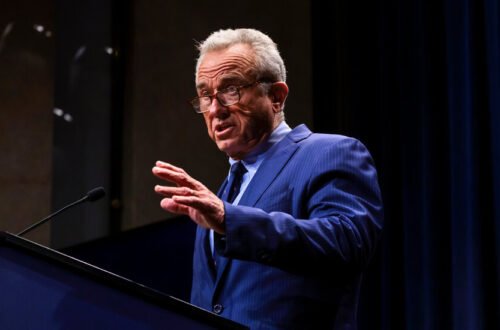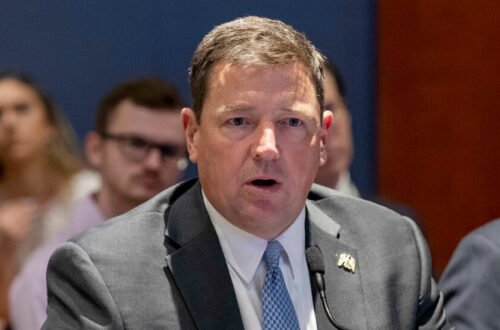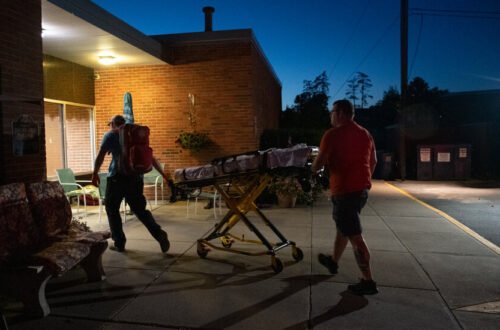The Supreme Court appeared divided during arguments on Monday over the constitutionality of a provision of the Affordable Care act that can require insurance companies to offer some types of preventive care for free.
At issue is a part of the 2010 health care law that established a task force that determines certain kinds of preventative health measures that insurance companies are required to cover.
Two small Christian businesses that provide health insurance to their employees, along with some Texas residents, had sued the federal government, challenging the constitutionality of the task force.
In particular, they had objected on religious grounds to the task force’s approval of no-cost H.I.V. medications, claiming the drugs “encourage and facilitate homosexual behavior.”
But the case, Kennedy v. Braidwood Management, could have broader implications for tens of millions of Americans who receive a wide array of free health care services, including cancer and diabetes screenings, medications to reduce heart disease and strokes, and eye ointment for newborns to prevent infections causing blindness.
A ruling in favor of the challengers could mean that insurers would no longer be required to offer free coverage for any care the United States Preventive Services Task Force has recommended since 2010.
The most sweeping recommendation the task force has made since then is for full coverage of drugs that prevent the transmission of H.I.V., typically known as PrEP. The medications are highly effective but often expensive.
A new, injectable PrEP medication that the Food and Drug Administration could approve as soon as this summer provides protection against H.I.V. for six months with a single shot. That medication currently costs about $42,000 in the United States for a year of treatment when used to treat H.I.V. infections. The drugmaker, Gilead, has not announced the price it will charge for the drug if the F.D.A. approves it as a preventive medication as well.
If the health law’s preventive service mandate stands, insurers would be required to provide it to patients at no cost. But if it falls, many expect health plans would cover the drug but require patients to pay at least part of the price.
Still, the argument before the court on Monday, which lasted slightly over an hour, focused little on the practical implications for patients. Rather, it was a technical argument focused on interpreting the statute and parsing the meaning of language in the law that declared the task force be “independent.” The justices heard arguments from the government and the challengers on whether that independence created constitutional issues by limiting the oversight and authority of the secretary of the Department of Health and Human Services.
The challengers argued that the task force violates the appointments clause of the Constitution because its members are appointed by the health secretary and not by the president, nor are they confirmed by the Senate.
Two of the justices — Sonia Sotomayor and Amy Coney Barrett — seemed to agree with the government’s argument that independence did not mean the task force operated without guidance or supervision from the secretary. They analogized the relationship of the task force members to the secretary with that of law clerks to the justices.
Justice Sotomayor suggested that independence meant that the members would act according to their best scientific and expert judgment.
“My law clerks, I ask to give me their independent judgment of what an answer should be, and they’ll tell you, there are sometimes — a lot of times — I don’t accept it, and I certainly have the power to fire them,” Justice Sotomayor said.
“And they still do it,” she said, to laughter.
Justice Barrett pointed out that independence might not mean a decision totally separate from the views of the secretary.
“Does ‘independent’ even have to mean independent of the secretary?” she asked.
She said that independence by one of her law clerks did not necessarily mean being “independent of me or my instruction.”
“I could give my law clerk some advance direction,” Justice Barrett said. “I could say: I want you to make an independent judgment. I want it to be free of political influence or free of outside influence, and by that, I would mean outside the court. I might mean outside of our chambers, but I might not mean for it to be apart from me, not independent of me.”
But Justice Brett M. Kavanaugh appeared skeptical of the government’s definition of independence.
After Hashim M. Mooppan, the principal deputy solicitor general, explained that the secretary could remove task force members and that the members might be influenced by their knowledge they could be removed, the justice broke in.
“That’s an odd definition of ‘independent,’ I suppose,” Justice Kavanaugh said.
The case had come to the justices through the lower courts in Texas, where a federal judge had agreed with the challengers’ constitutional argument, finding that the task force did not have the authority to determine what a health insurance company must cover. The U.S. Court of Appeals for the Fifth Circuit, in New Orleans, one of the most conservative appeals courts in the country, had somewhat narrowed that ruling, finding that the task force had too much independence.
The Biden administration then asked the Supreme Court to step in and to find the task force constitutional, allowing it to continue to authorize preventive care medication. In the final days of the Biden administration in early January, the court agreed that it would take up the matter.
The Trump administration continued to argue that the task force was constitutional.
Even if the justices uphold the law and find that the task force members need not be appointed by the president, that does not mean the case ends. Several issues could remain for lower courts depending on the scope of the court’s decision, including the legality of decisions already made by the task force, like free access to H.I.V. medications.
The case comes amid a series of decisions by the court to limit the power of administrative agencies.
Sarah Kliff contributed reporting.



